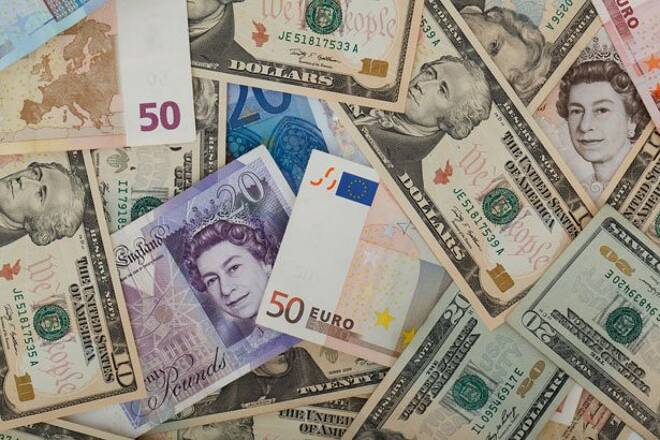Advertisement
Advertisement
EUR/USD Daily Technical Analysis for August 21, 2017
By:
The dollar gained traction and came off its lows following news that chief strategist Steve Bannon was pushed out of the White House. Bright Bart
The dollar gained traction and came off its lows following news that chief strategist Steve Bannon was pushed out of the White House. Bright Bart immediately tweeted out immediately “war” which does not bode well for the White House. Riskier assets got a boost, pushing U.S. stocks higher, which generated a minor relief rally.
Technicals
The EUR/USD generated an inside which is a sign of indecision. The exchange rate tested resistance near the 10-day moving average at 1.1766. Support is seen near the 50-day moving average at 1.1513. Momentum remains negative as the MACD (moving average convergence divergence) histogram prints in the red with a downward sloping trajectory which points to a lower exchange rate. The RSI (relative strength index) edged higher, above support reflecting consolidation.
Risk of a U.S. Rate Hike is below 50-50
The risk for another rate hike in 2017 remains below 50-50, according to Fed funds futures. The run of weaker than expected inflation measures, worries over the president’s stimulus agenda, and yesterday’s FOMC minutes, have eroded futures prices. Implied rates have been suggesting only about 40% risk for a 25-basis points rate hike by the end of the year. Yesterday after the FOMC minutes were digested, the market was in the high 30% region. The minutes had a dovish tilt to them, given the overriding concerns over the weak inflation trend that corroborate recent Fedspeak that largely concentrated on the price outlook. “Many” saw the potential that inflation will remain below the 2% target for longer than they expected. A “number” of participants debated the usefulness of the Phillips Curve. “Some” even thought the FOMC could be “patient” in further tightening, while “some others” worried about risk of delaying. We still forecast a firming posture in CPI over 2H. That, and signs of stronger growth, support our call for a third tightening this year. But as the Fed always says, much will depend on the evolution of the data, not to mention financial conditions, and/or any geopolitical tumult.
Eurozone Construction Output Dropped
Eurozone construction output dropped -0.5% month over month in June, after already falling -0.2% month over month in May. The annual rate still jumped to 3.4 %year over year form 2.7% year over year. Not a closely watched indicator and with Q2 GDP already releases mainly giving background information, but the June data lifted the growth rate for the second quarter to 1.2% from 0.8% quarter over quarter in Q1, indicating that construction is underpinning the strengthening recovery.
Eurozone Posted a Current Account Surplus
The Eurozone posted a current account surplus of EUR 21.2 billion in June, which brought the total for the second quarter to EUR 74.7 billion, down from EUR 90.0 billion in the previous quarter. The goods balance widened slightly in June, but the primary income balance dropped sharply and the secondary income balance turned further negative. The unadjusted financial account showed direct and portfolio investment outflows of EUR -5.0 billion, as direct investment outflows amounted to EUR -44.4 billion, which wiped out portfolio investment inflows of EUR 39.4 billion in June.
German Producer Price Were Stronger Than Expected
German producer prices came in higher than expected, with the headline rate falling back only slightly to 2.3% year over year from 2.4% year over year in the previous month. Annual price increases for basic goods eased further, but at 3.0% year over year the rate remains high and the pace of decline since the peak in April has slowed, despite the strong EUR. At the same time, energy price inflation picked up to 1.9% year over year from 1.6% year over year. Capital, and durable goods price inflation ticked marginally higher, but remains low at 1.1% year over year for each category.
Fed dove Kashkari said Fed would consider the debt ceiling negotiations when deciding the start of the balance sheet reduction schedule. He’s also skeptical that the U.S. can achieve 3% growth and hope U.S. will pursue tax reforms, not just cuts. He continues to see no urgency to hike rates, urging patience in the face of low inflation, and requiring evidence that inflation will rebound in the medium-term before backing more hikes. This followed relatively dovish comments from hawk Kaplan on the next rate hike, though he didn’t see any reason to delay the start of quant tightening (QT).
About the Author
David Beckerauthor
David Becker focuses his attention on various consulting and portfolio management activities at Fortuity LLC, where he currently provides oversight for a multimillion-dollar portfolio consisting of commodities, debt, equities, real estate, and more.
Did you find this article useful?
Latest news and analysis
Advertisement
